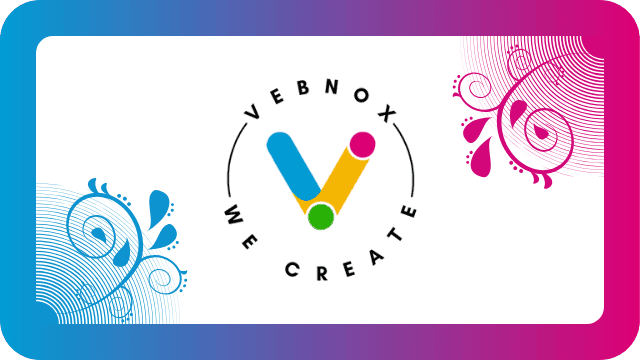A Comprehensive Guide to Mobile App Development for iOS
Table of Contents
Introduction to iOS App Development
In today’s digital age, mobile app development has emerged as a pivotal segment of the tech industry, especially with the growing prevalence of smartphones. Among the various platforms available, iOS has distinguished itself as a leader in delivering high-quality user experiences and robust functionalities. The importance of iOS app development cannot be overstated, as it caters to a substantial user base that appreciates well-designed, intuitive mobile applications tailored for their devices.
The popularity of iOS among users can be attributed to Apple’s commitment to innovation and excellence in app design. iOS users often enjoy higher engagement and retention rates, offering a tantalizing opportunity for businesses and app developers alike. Companies looking to create custom mobile apps can find that iOS presents a lucrative environment for targeting a demographic that values quality, security, and a seamless mobile user experience. This is where the role of skilled app developers comes into play, as they are tasked with creating interactive mobile apps that resonate with users and fulfill business objectives.
Moreover, the iOS ecosystem is characterized by a well-established framework, integrated tools, and extensive support from Apple. As a mobile development agency, leveraging this ecosystem can lead to the creation of cross-platform apps that not only perform well on iOS devices but also align with the growing market demand for multi-device functionality. From app management to app optimization, every facet of iOS development is crucial for delivering business app solutions that meet user expectations. By understanding the significance of iOS app development, businesses can harness unique opportunities, ensuring they remain competitive in an ever-evolving digital landscape.
Understanding the iOS Development Environment
The development of iOS applications necessitates a robust environment that equips app developers with all the necessary tools and technologies. Central to iOS app development is Xcode, Apple’s integrated development environment (IDE), which provides a comprehensive suite of features essential for creating mobile applications. Xcode includes a source editor, a graphical interface builder, and a debugger, making it an indispensable aspect of app development for the iOS platform.
Alongside Xcode, Swift stands out as the primary programming language for developing robust iOS applications. Its elegant syntax and emphasis on performance significantly enhance mobile app functionality, allowing developers to write cleaner and more maintainable code. Objective-C, although less prevalent due to Swift’s increase in popularity, remains a vital language for legacy applications and offers a deeper understanding of iOS development principles.
Furthermore, iOS development relies heavily on software development kits (SDKs) and frameworks, which provide pre-written code and functionalities that simplify the building process. Notable frameworks include UIKit, which facilitates user interface design and management, and Core Data, essential for data persistence. Understanding these components allows developers to create custom mobile apps that not only meet business app solutions but also provide a seamless mobile user experience.
Key concepts in iOS app development include Interface Builder and the Model-View-Controller (MVC) design pattern. Interface Builder is a visual tool within Xcode that empowers developers to design user interfaces visually, enhancing the app design process. Meanwhile, the MVC design pattern establishes a structured approach to app architecture by separating data, user interface, and control logic, promoting scalability and maintainability within interactive mobile apps.
In choosing a mobile development agency, understanding the iOS development environment is crucial, ensuring that app developers are well-versed in these key tools and concepts, ultimately leading to successful application outcomes.
The iOS App Development Process
The iOS app development process is a meticulous and structured approach that encompasses several crucial stages. Understanding this lifecycle is essential for app developers aiming to create high-quality applications that meet user expectations. The process typically begins with the planning phase, where developers engage in brainstorming sessions to establish the app’s purpose, target audience, and functionality. This stage is critical in ensuring that the mobile app development aligns with business app solutions and user needs.
Following planning, the design phase comes into focus. During this stage, app design concepts are produced, defining the aesthetic and functional aspects of the application. Attention is given to mobile user experience, ensuring that the interface is intuitive and appealing. Designers collaborate with app developers to create interactive mobile apps that effectively engage users. Various tools are employed to generate wireframes and prototypes, enabling stakeholders to visualize the final product.
The coding stage involves developers utilizing programming languages, such as Swift or Objective-C, to write the app’s code. This phase is where the app takes shape, with mobile application design enhanced by following best practices in coding. Developers also focus on optimizing app functionality, ensuring that the app performs efficiently across different devices.
Once coding is complete, the testing phase begins. This step is vital to identify and rectify bugs or issues within the application. Rigorous testing is conducted to ensure the app delivers a seamless mobile user engagement experience. Testing incorporates various scenarios, including performance testing, usability testing, and compatibility testing across different iOS devices.
Finally, after thorough testing, the app is ready for deployment. The deployment stage includes submitting the application to the App Store, adhering to Apple’s stringent guidelines for review and approval. After launching, ongoing app management and app optimization strategies may be required to maintain the app’s performance and relevance in the market. By following these steps, developers can effectively navigate the iOS app development process, leading to successful and impactful applications.
Design Principles for iOS Apps
The design of iOS applications plays a crucial role in their success, as it directly influences the mobile user experience. Apple has established a set of Human Interface Guidelines that serve as a foundation for developers and designers engaged in iOS app development. These guidelines focus on creating visually appealing, user-friendly designs that enhance mobile user engagement.
When developing custom mobile apps for iOS, understanding the importance of user interface (UI) design is fundamental. A well-crafted UI not only attracts users but also ensures ease of navigation, which is critical in mobile application design. App developers must emphasize consistency in layout, color schemes, and typography. These elements should resonate with Apple’s aesthetic, promoting a seamless integration with the iOS ecosystem. Adhering to these design principles can foster a positive perception among users and facilitate better app management.
Additionally, user experience (UX) considerations are essential when designing iOS applications. UX encompasses all aspects of the user’s interaction with the app, from usability to functionality. An app that responds swiftly and intuitively to user inputs boosts user satisfaction and retention. Therefore, app development experts often prioritize intuitive gestures, responsive feedback, and efficient loading times in their development processes. These elements contribute to a fluid and interactive mobile experience, crucial for engaging users in today’s competitive market.
Moreover, cross-platform apps require a unique consideration of design principles. In order to ensure that mobile solutions align with the iOS standards, developers should optimize the functionality and interface design specifically for Apple devices. This alignment ensures that the application not only meets the expectations of iOS users but also maintains the same level of quality across different platforms, enhancing the overall mobile development experience.
Key Features and Functionalities of iOS Applications
When it comes to iOS app development, creating a successful application involves more than just aesthetic appeal; it necessitates an understanding of key features and functionalities that enhance user experience and engagement. One pivotal element of iOS applications is push notifications, which allow businesses to communicate directly with their users. This feature keeps users informed about new updates, promotional offers, or reminders, significantly improving mobile user engagement and retention rates.
Location services represent another integral component of mobile app functionality. By enabling location-based features, developers can create custom mobile apps that offer personalized experiences, such as finding nearby services or optimizing route navigation. This capability not only enhances usability but also adds value to the app, leading to improved user satisfaction.
Access to the device’s camera also plays a crucial role in modern iOS applications. This functionality facilitates features like augmented reality (AR), image capturing, or QR code scanning, which can be pivotal for interactive mobile apps. Custom mobile apps leveraging this functionality can create unique user experiences, making the applications more engaging and useful.
Another significant feature is in-app purchases, which allow users to buy premium content or unlock additional functionalities directly from the application. This not only enhances the monetization aspect for app developers but also provides users with the flexibility of choosing how they wish to engage with the mobile app functionality. By intelligently integrating these features during the app design phase, businesses can ensure their applications remain competitive in the crowded marketplace.
Ultimately, understanding these key features in iOS app design is essential for creating effective business app solutions. The capabilities mentioned contribute to the overall mobile application design, enhancing mobile user experience while providing a pathway for app marketing advantages. Consulting with app development experts or a mobile development agency can further aid in identifying which features will align best with a company’s goals.
Testing and Quality Assurance in iOS Development
Testing and quality assurance are critical phases of iOS app development, ensuring that the final product meets quality standards and functions reliably. The process involves multiple methods and tools to evaluate different aspects of the application, each serving a unique purpose to enhance mobile user experience. Effective testing identifies bugs, optimizes app functionality, and verifies that the application adheres to specified requirements.
One of the fundamental testing methods is unit testing, which focuses on individual components of the app. This method verifies that each section of the code performs as intended, contributing to overall application stability. Developers often utilize tools such as XCTest for unit testing, as it seamlessly integrates within the Apple development environment, allowing for efficient testing and debugging.
Another crucial testing method is integration testing, which assesses the interaction between various components of the app. This testing ensures that different modules work together correctly, which is vital in complex custom mobile apps. By performing integration tests, developers can catch issues that may not be apparent in unit testing, leading to more robust mobile solutions.
User Interface (UI) testing is also of paramount importance, as it evaluates the app’s visual elements and user interactions. Tools such as UI Testing in XCTest enable developers to automate UI tests, ensuring that the app’s design remains consistent across multiple iOS devices. Comprehensive UI testing enhances mobile user engagement by ensuring that users have a smooth and intuitive interface.
In conclusion, effective testing and quality assurance are essential to the success of any mobile app development project. By employing various testing methods and tools, development teams can ensure that their applications not only function correctly but also provide a satisfying and engaging user experience. A commitment to quality throughout the app development lifecycle ultimately leads to better business app solutions and a higher return on investment.
Publishing Your iOS App on the App Store
Publishing an iOS application on the App Store is a crucial step in the mobile app development process that allows businesses to reach a vast audience of iPhone and iPad users. To successfully publish your app, you must first prepare it for submission. This preparation includes ensuring that your app adheres to Apple’s App Store Review Guidelines, which cover aspects such as functionality, content, and user experience. It is also essential to optimize your app for performance and reliability to enhance mobile user engagement.
After ensuring compliance with the guidelines, the next step is to create an App Store listing. A well-crafted listing includes an app name, description, keywords, screenshots, and promotional materials. The app description should clearly articulate the app’s functionality and benefits to potential users, while engaging visuals can significantly influence app downloads. You may consider collaborating with app design experts to create visually appealing graphics that effectively showcase your app’s unique features.
Once your app and listing are ready, submit your application through Apple’s App Store Connect platform. It is important to note that your app will undergo a review process, where Apple’s app reviewers will evaluate it based on their guidelines. The review period may take a few days to a week, so planning for this timeline in your project schedule is advisable. Be prepared to address any feedback or rejections promptly, as this can significantly affect your app’s release timeline.
Finally, some common pitfalls to avoid during the submission process include incomplete app metadata and failure to test your app across different devices. To optimize your chances of approval, take advantage of app consulting services that provide guidance on best practices for app submissions. By following these steps diligently, you can ensure a smooth publication process for your iOS app, ultimately leading to successful mobile solutions in the competitive app marketplace.
Marketing Your iOS App
Marketing an iOS app effectively requires a strategic approach that encompasses various facets, including branding, user acquisition strategies, and optimization techniques. First and foremost, establishing a strong brand identity is essential. This includes creating a memorable app name, logo, and visual design to enhance mobile user experience. A well-defined brand helps position the app within a crowded marketplace, aiding in differentiation from competitors.
When it comes to user acquisition, leveraging multiple channels is key. App developers should consider implementing both organic and paid strategies. Organic user acquisition can be driven by utilizing app store optimization (ASO) techniques. Optimizing keywords in the app title and description can improve visibility in search results, making it easier for potential users to discover the app. Furthermore, compelling app screenshots and engaging video previews can significantly enhance the app’s appeal and increase download rates.
Social media marketing is another powerful tool in the arsenal of mobile app marketing. Actively engaging with users on platforms such as Facebook, Instagram, and Twitter can foster a vibrant community around the app, encouraging word-of-mouth promotion. Additionally, consider running targeted ad campaigns that showcase the app’s unique features and benefits to potential users.
Gathering user feedback plays a critical role in the ongoing evolution of any mobile application. Implementing channels for user reviews and suggestions can provide valuable insights into user preferences, which developers can use to enhance mobile app functionality through regular updates. Furthermore, effective app management involves analyzing user data to understand engagement patterns, allowing for targeted improvements that lead to an ultimately superior product.
In conclusion, a comprehensive marketing strategy that includes strong branding, user acquisition methodologies, app store optimization, social media engagement, and user feedback integration is crucial for the successful marketing of an iOS app. Implementing these strategies with the guidance of app development experts can significantly improve an app’s visibility and user engagement in the competitive mobile app landscape.
Conclusion and Future Trends in iOS Development
In this comprehensive guide to mobile app development, we have extensively explored various aspects of iOS app development, from the initial design to implementation and optimization. The importance of custom mobile apps tailored to specific business needs cannot be overstated, as these solutions significantly enhance mobile user experience and engagement. Skilled app developers understand the necessity for seamless mobile functionality, prioritizing user-centric design and efficient app management practices.
Looking ahead, the landscape of iOS app development is set to evolve dramatically with the introduction of groundbreaking technologies. Augmented reality (AR) is one such technology that allows developers to create interactive mobile apps which effectively bridge the digital and physical worlds, offering users enriched experiences. Furthermore, the integration of artificial intelligence (AI) into mobile solutions stands to revolutionize how businesses interact with their customers through personalized services and sophisticated app functionalities.
Cross-platform apps are becoming increasingly relevant in a market that demands versatility and broader reach. By adopting app development strategies that utilize advanced frameworks, developers can ensure their mobile applications cater to diverse user needs while maintaining high-quality app performance. Furthermore, the emphasis on app optimization and consulting will continue to grow as businesses seek app marketing strategies that not only promote their offerings but also enhance mobile user engagement.
As the demand for innovative ios app design and exceptional android development services rises, mobile development agencies must adapt to these trends to remain competitive. The future promises a landscape where mobile app development is not only more efficient but also more adaptive, allowing for the emergence of unique business app solutions that meet the evolving expectations of users. Embracing these changes will be essential for app development experts aiming to lead the industry forward.







Comments are closed